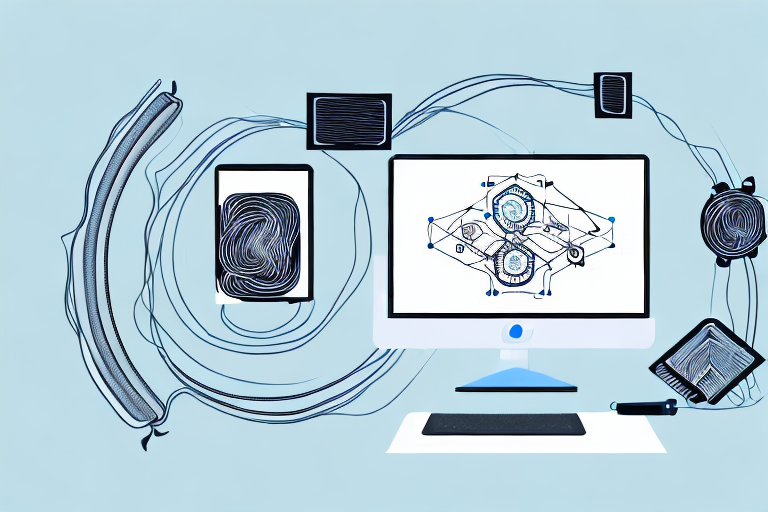Integrating with Third-Party Apps and Services: Boosting Business Efficiency
As businesses expand, the integration of third-party apps and services becomes indispensable. Seamless integration streamlines processes, automates tasks, and enhances overall efficiency, leading to substantial cost savings. This comprehensive guide delves into the importance of third-party integrations, their benefits, challenges, and best practices to ensure successful implementation.
Importance of Third-Party Integration for Modern Businesses
In today's dynamic business environment, integrating with third-party apps and services is crucial for maintaining competitiveness. According to a Gartner report, 70% of organizations anticipate significant disruption by 2025 due to technological advancements. Integration allows businesses to automate manual tasks, consolidate data across various systems, and enhance operational agility.
Leveraging Best-of-Breed Tools
By integrating third-party solutions, companies can utilize specialized tools without the need to develop them in-house, fostering innovation and efficiency.
Key Benefits of Third-Party Integrations
Integrating with third-party apps and services offers numerous advantages:
- Automation of Manual Tasks: Reduces the need for manual intervention, saving time and resources.
- Enhanced Data Accuracy: Centralizes data, minimizing errors associated with manual data entry.
- Informed Decision Making: Provides real-time data and analytics for better strategic decisions.
- Cost Efficiency: Eliminates the need for extensive custom development, reducing long-term costs.
- Streamlined Operations: Optimizes workflows, eliminating bottlenecks and improving overall efficiency.
Data-Driven Success
Businesses leveraging integrated systems report up to a 30% increase in operational efficiency (Forbes).
Challenges in Integrating Third-Party Solutions
Despite the benefits, integration presents several challenges:
- Complexity: Requires comprehensive understanding of both systems and potential custom development.
- Data Mapping: Ensuring data compatibility across different platforms can be intricate.
- Security Risks: Sharing data externally can expose systems to vulnerabilities.
- Compatibility Issues: Disparities between system architectures can hinder seamless integration.
- Vendor Lock-In: Dependence on specific vendors may limit flexibility and future scalability.
Mitigating Integration Complexity
Employing middleware solutions and adhering to standardized APIs can simplify the integration process.
Types of Third-Party Integrations
Understanding the various integration types is essential for selecting the right approach:
- Point-to-Point Integrations: Direct connections between two systems without intermediaries.
- Middleware-Based Integrations: Utilize middleware to facilitate communication between multiple systems.
- Cloud-Based Integrations: Leverage cloud infrastructure for scalable and flexible integrations.
- API-Based Integrations: Use Application Programming Interfaces to enable communication between systems.
Choosing the Right Integration Type
The choice depends on specific business needs, scalability requirements, and existing infrastructure.
Best Practices for Successful Integration Projects
Adhering to best practices ensures smooth and effective integration:
- Define Clear Objectives: Align integration goals with overall business strategies.
- Identify Key Stakeholders: Ensure all relevant parties are involved and informed.
- Develop a Detailed Project Plan: Outline scope, timelines, and deliverables meticulously.
- Ensure Robust Communication: Maintain open channels between the integration team and stakeholders.
- Implement Rigorous Testing: Continuously test to identify and rectify issues promptly.
- Monitor and Maintain: Regularly oversee integrations to ensure ongoing stability and performance.
Strategic Planning for Integration Success
Effective planning can reduce the likelihood of project delays and cost overruns, ensuring that integrations deliver the expected value.
Security Considerations in Third-Party Integrations
Integrating external services introduces potential security vulnerabilities:
- Data Breaches: Increased exposure to malicious attacks targeting sensitive information.
- Unauthorized Access: Risk of unauthorized entities accessing integrated systems.
- Data Integrity: Ensuring data remains accurate and unaltered during transmission.
Mitigation Strategies
Implementing data encryption, robust authentication mechanisms, and regular security audits can significantly reduce risks. According to a CSO Online article, organizations that prioritize security in integrations are 50% less likely to experience data breaches.
Future Trends in Third-Party Integrations
The integration landscape is evolving with emerging trends:
- Integration-as-a-Service (IaaS): Outsourcing integration processes to specialized service providers.
- Real-Time Integration: Facilitating immediate data processing and decision-making.
- Low-Code/No-Code Platforms: Enabling users to build integrations with minimal technical expertise.
Embracing Innovation for Competitive Advantage
Staying abreast of these trends allows businesses to enhance their integration strategies, fostering greater agility and innovation.
Conclusion
Integrating with third-party apps and services is a strategic imperative for businesses aiming to boost efficiency and maintain a competitive edge. While challenges exist, adhering to best practices, prioritizing security, and staying informed about emerging trends can ensure successful and sustainable integrations. By leveraging the right tools and methodologies, businesses can unlock significant value and drive growth in an increasingly interconnected digital ecosystem.




















